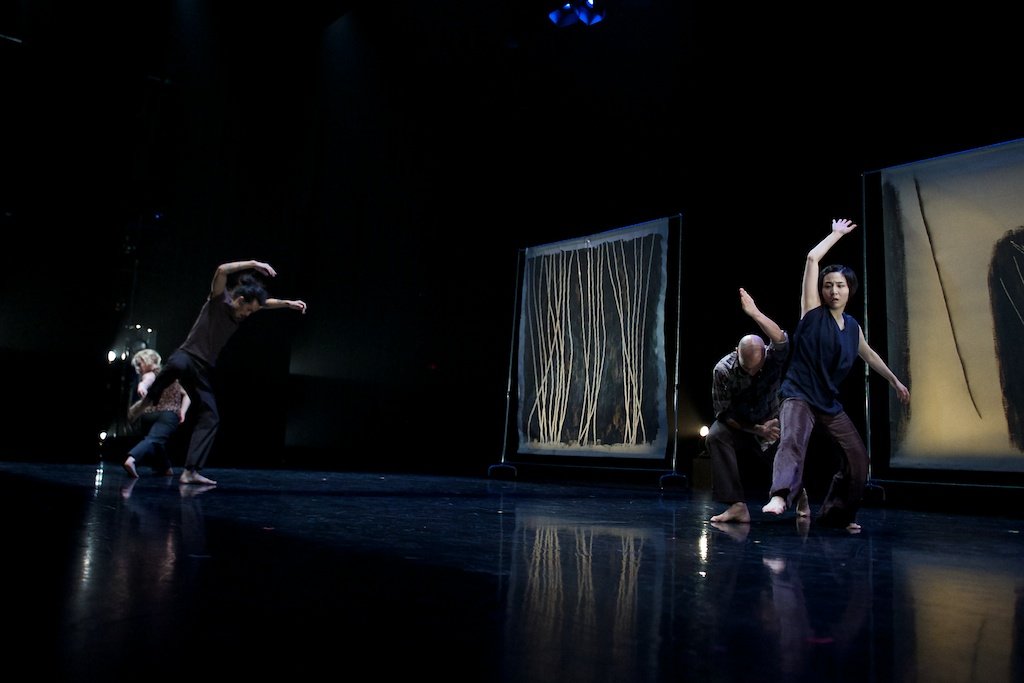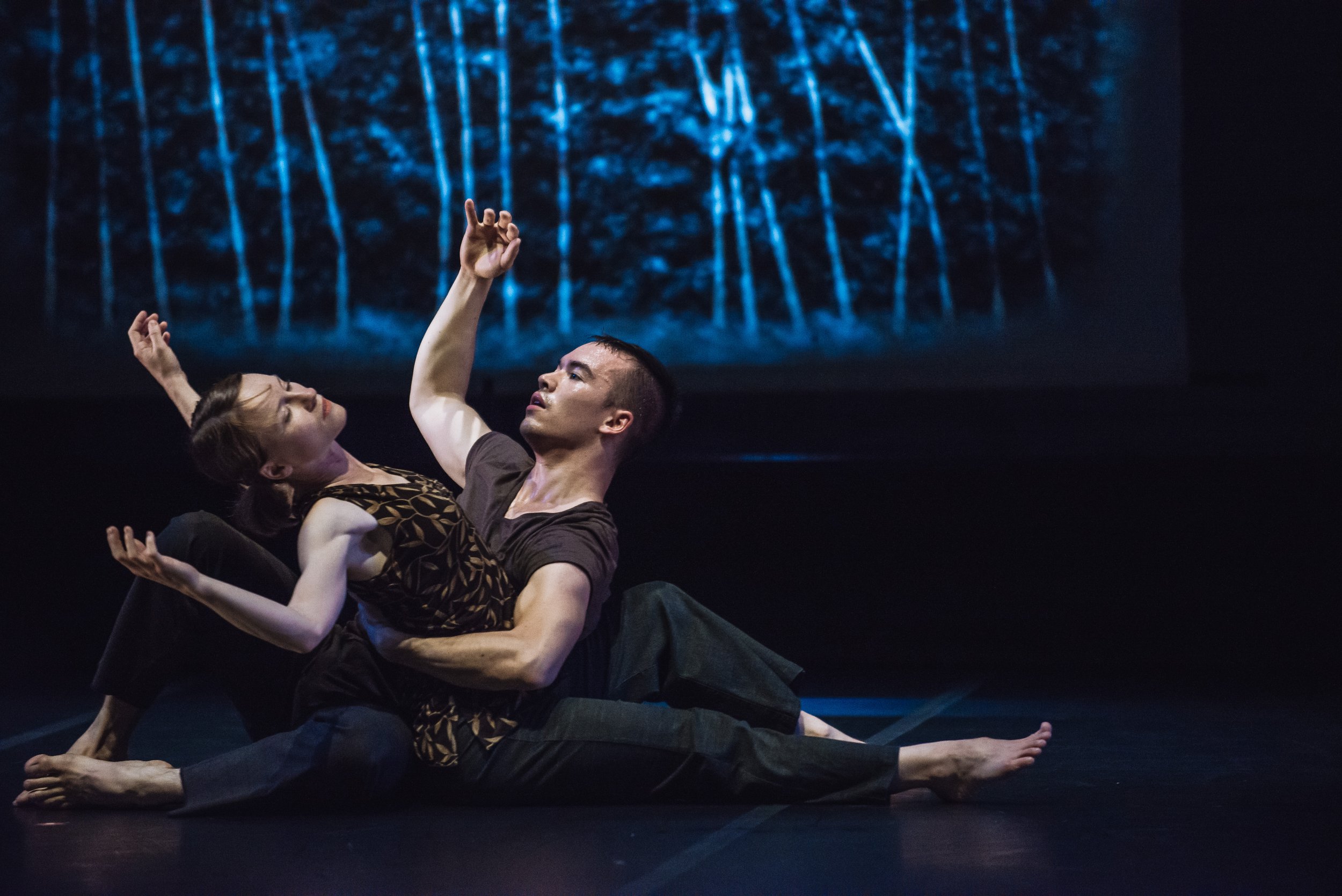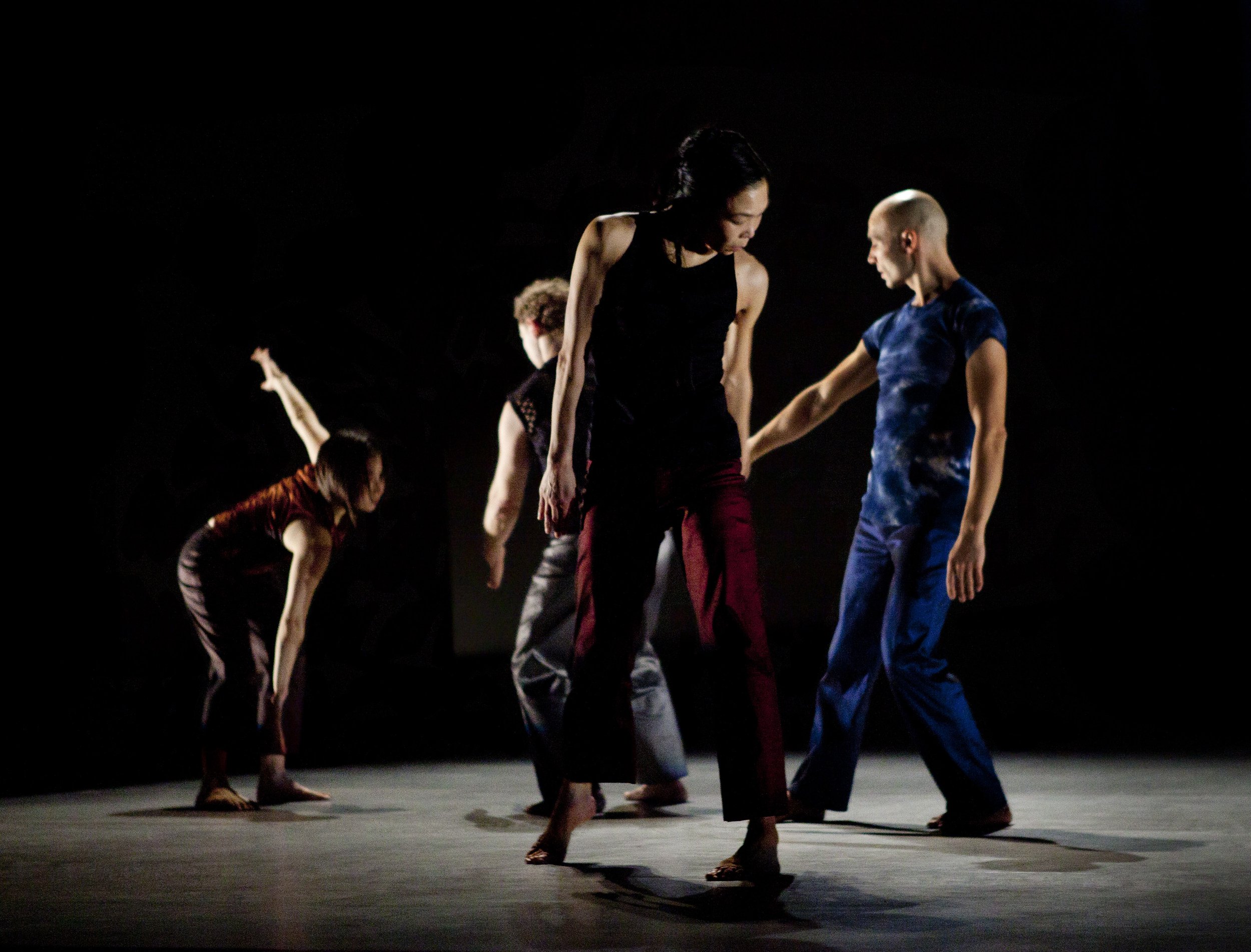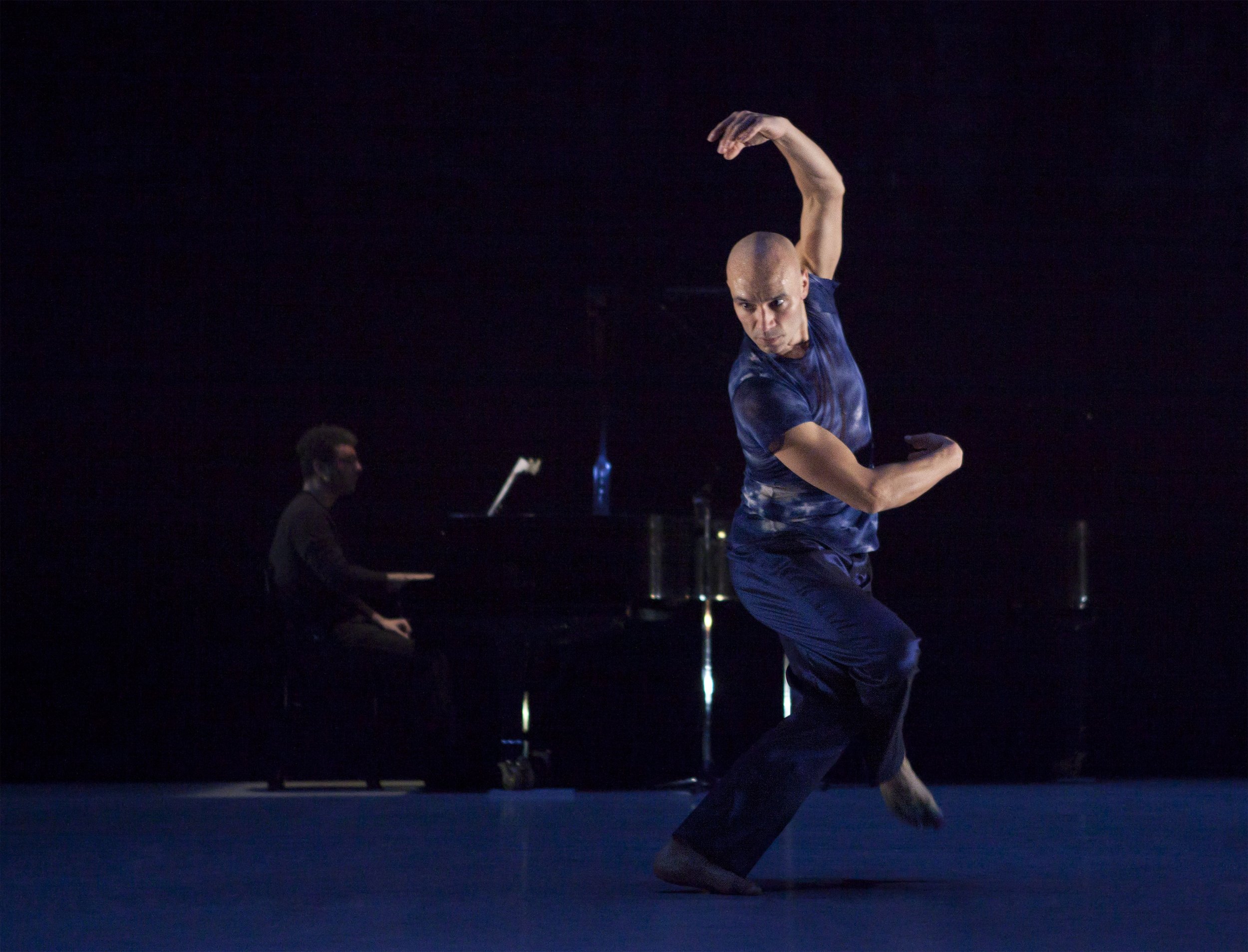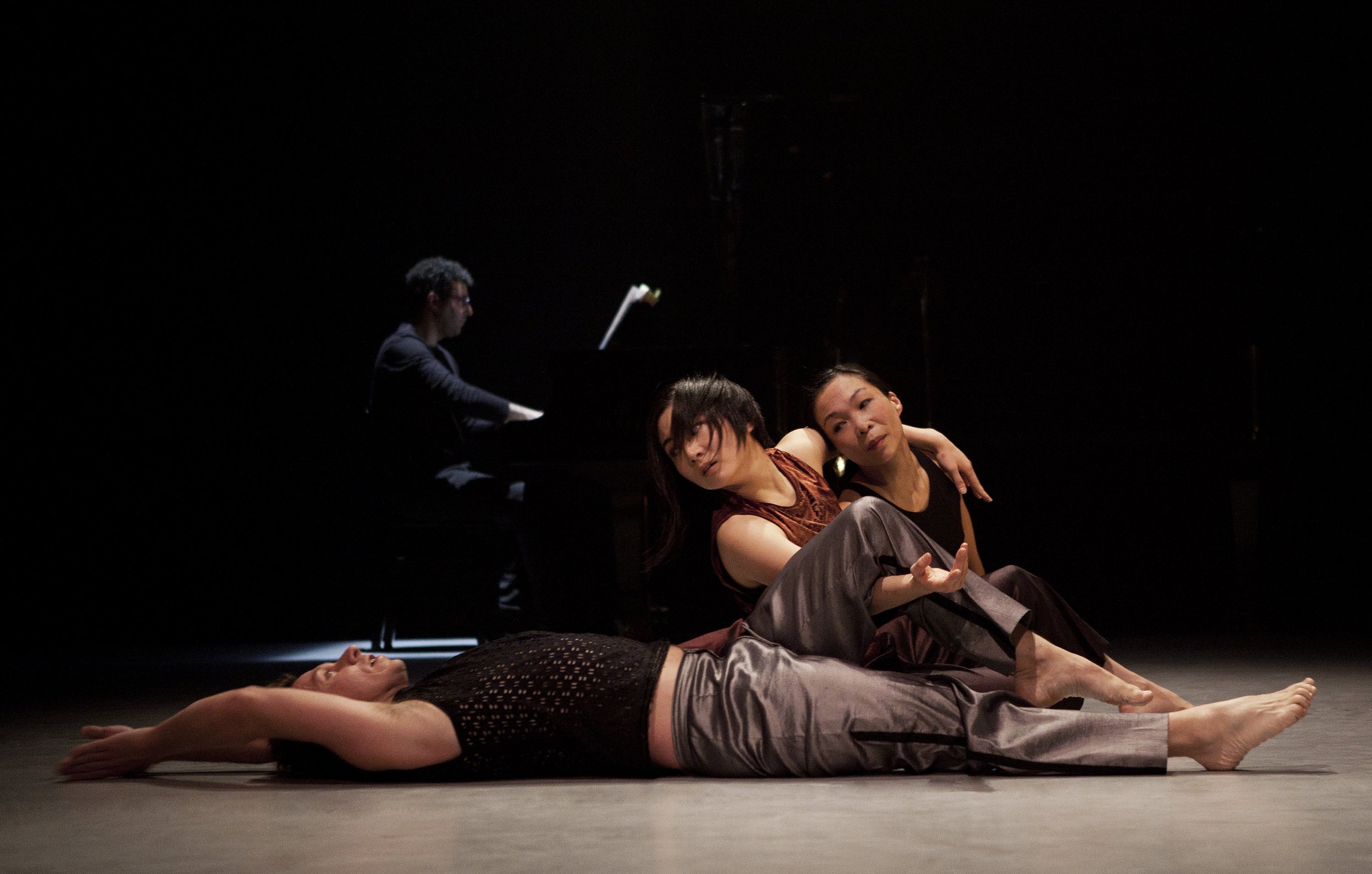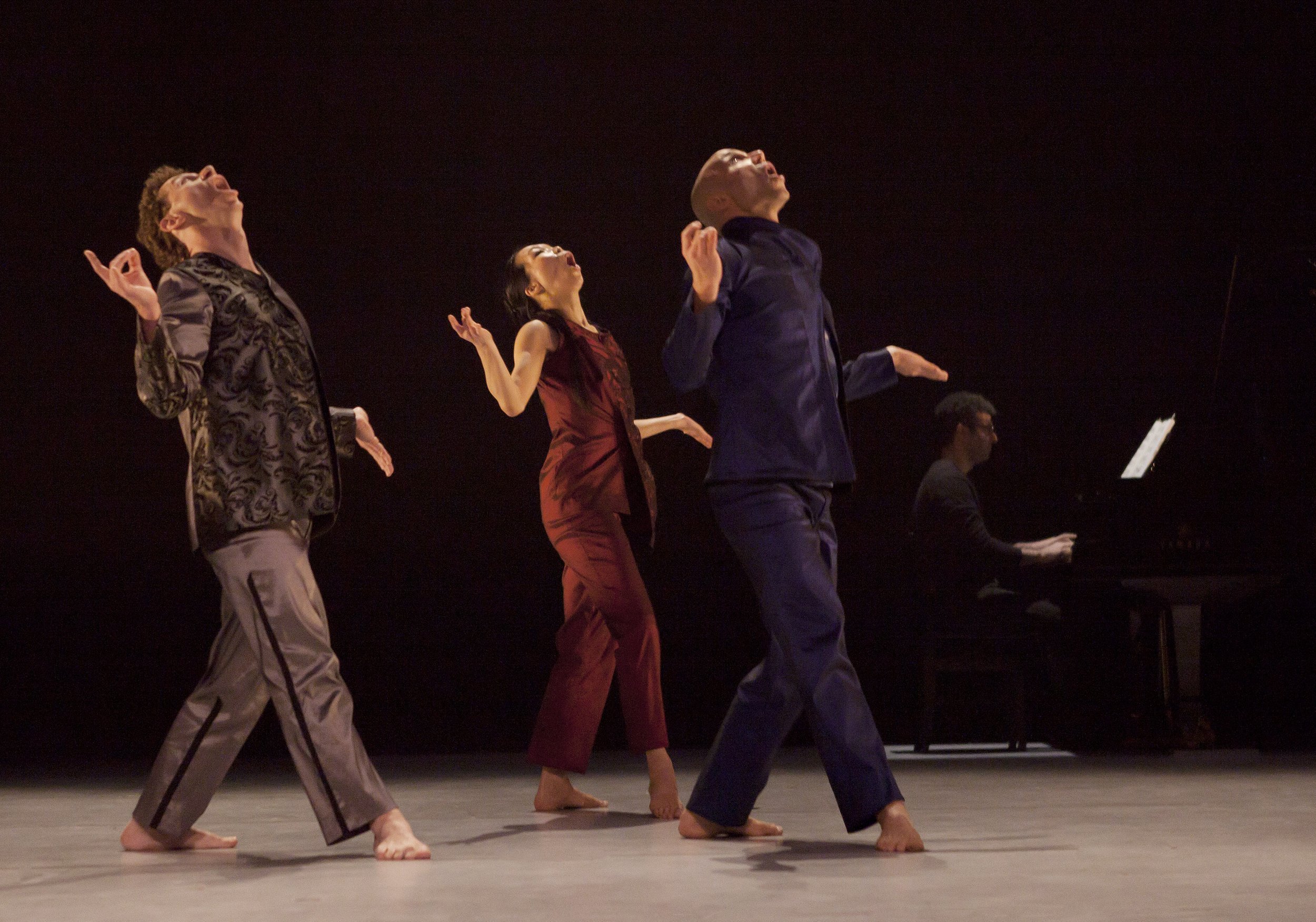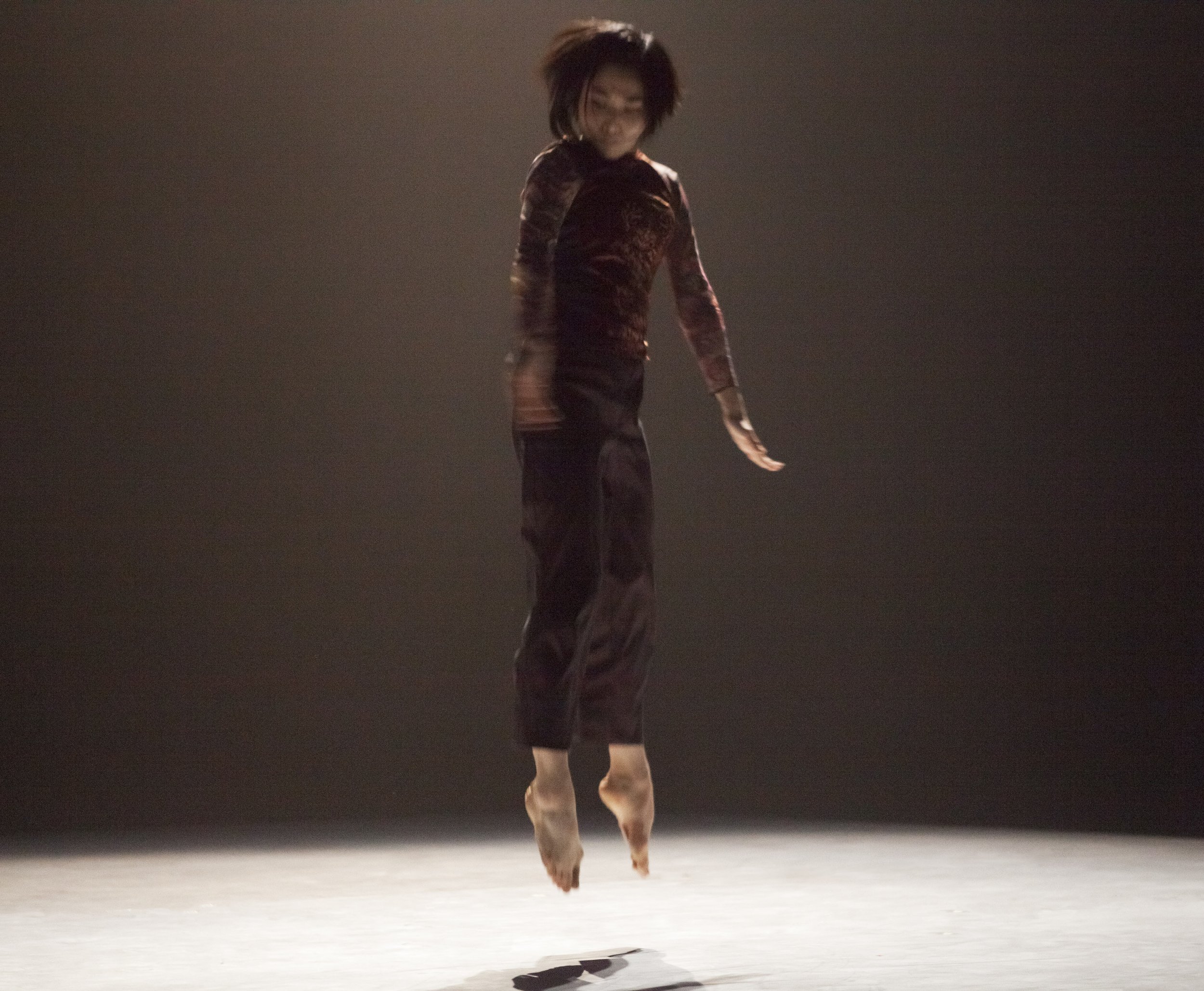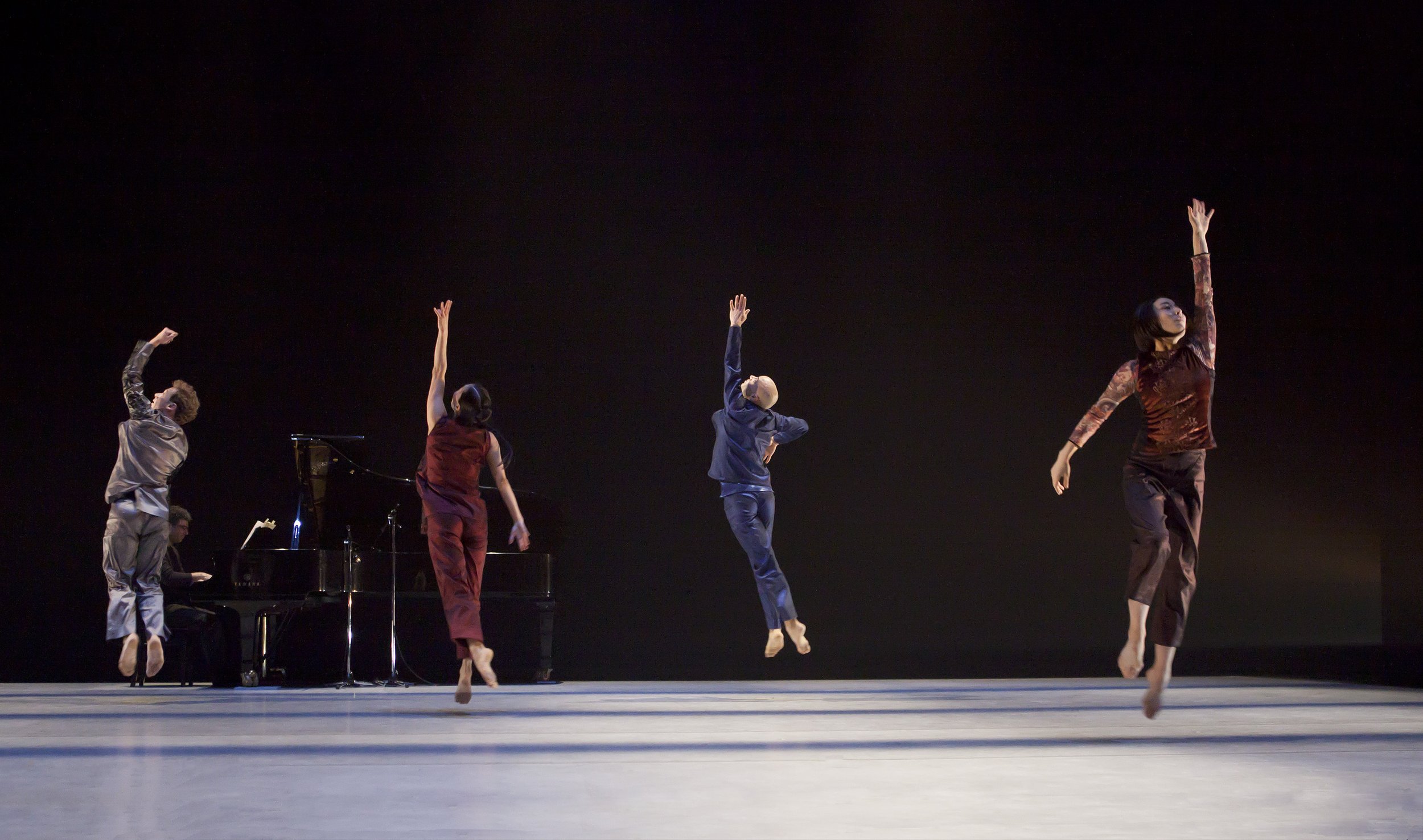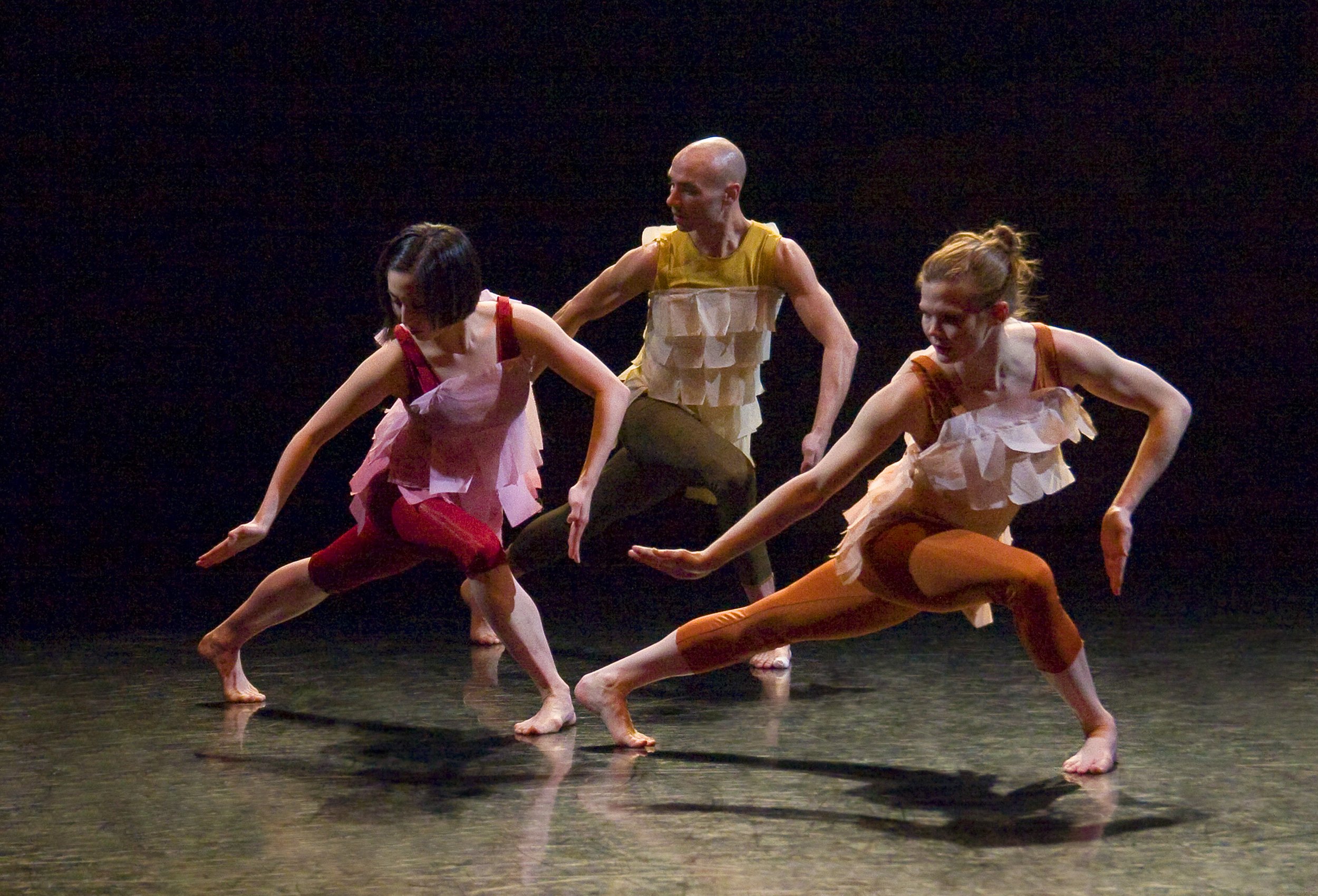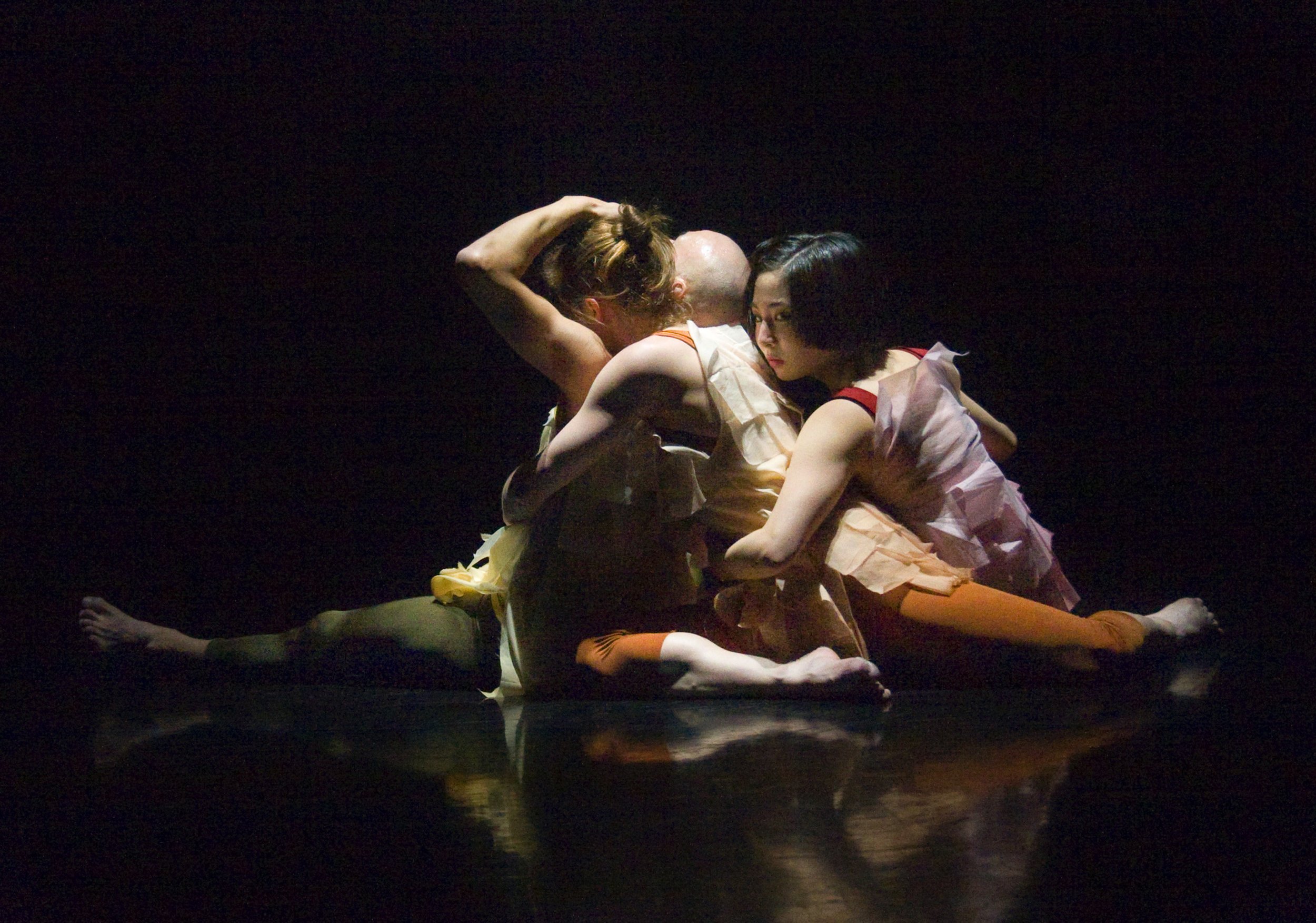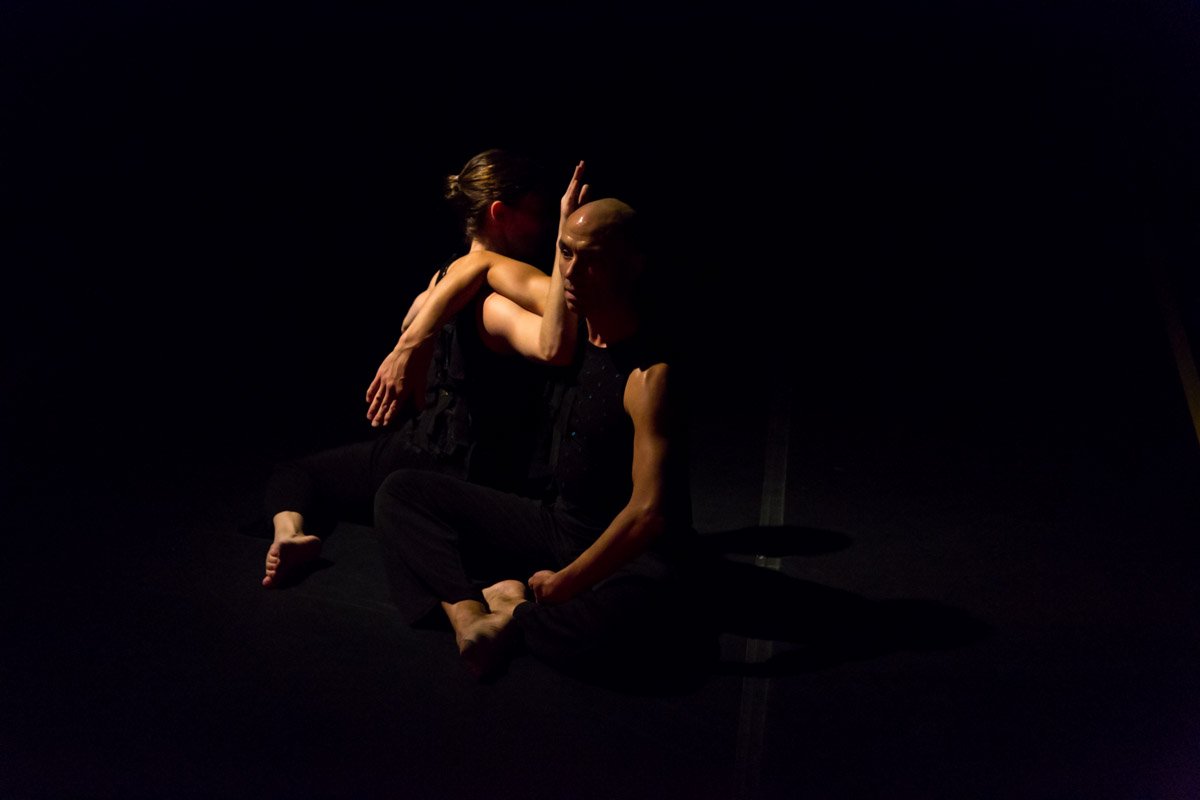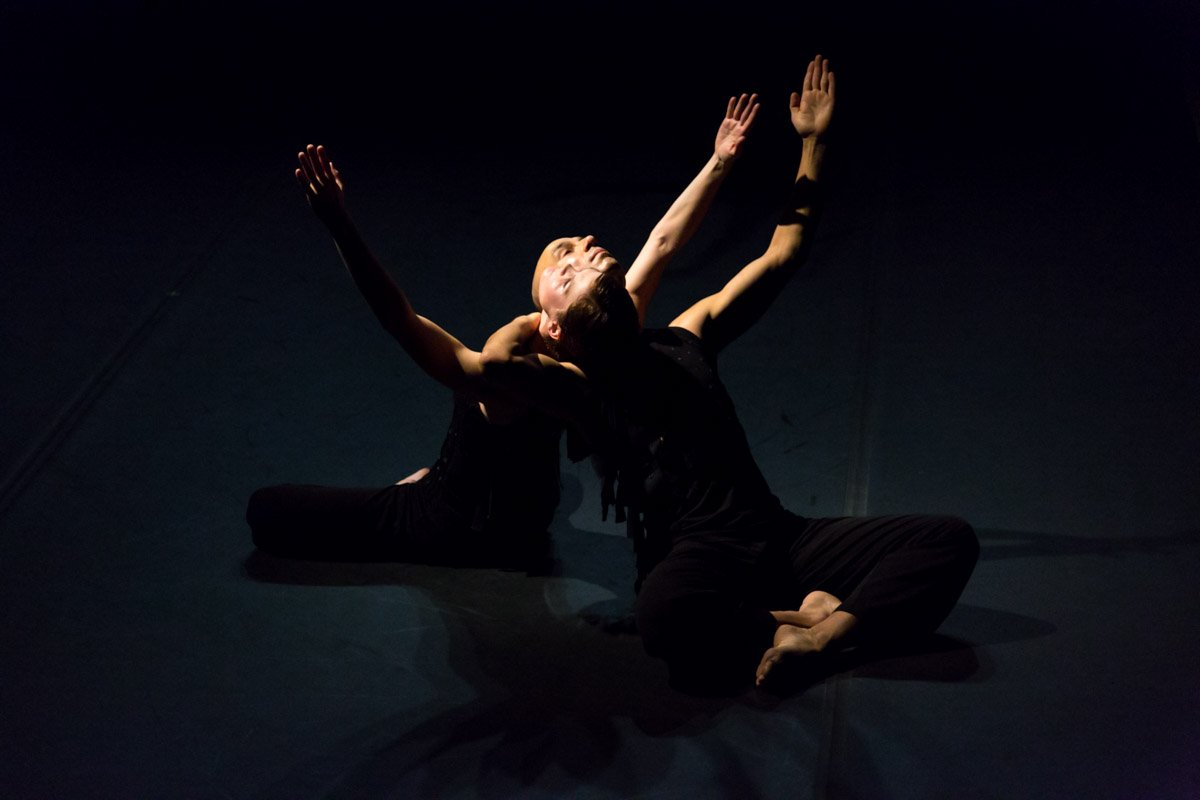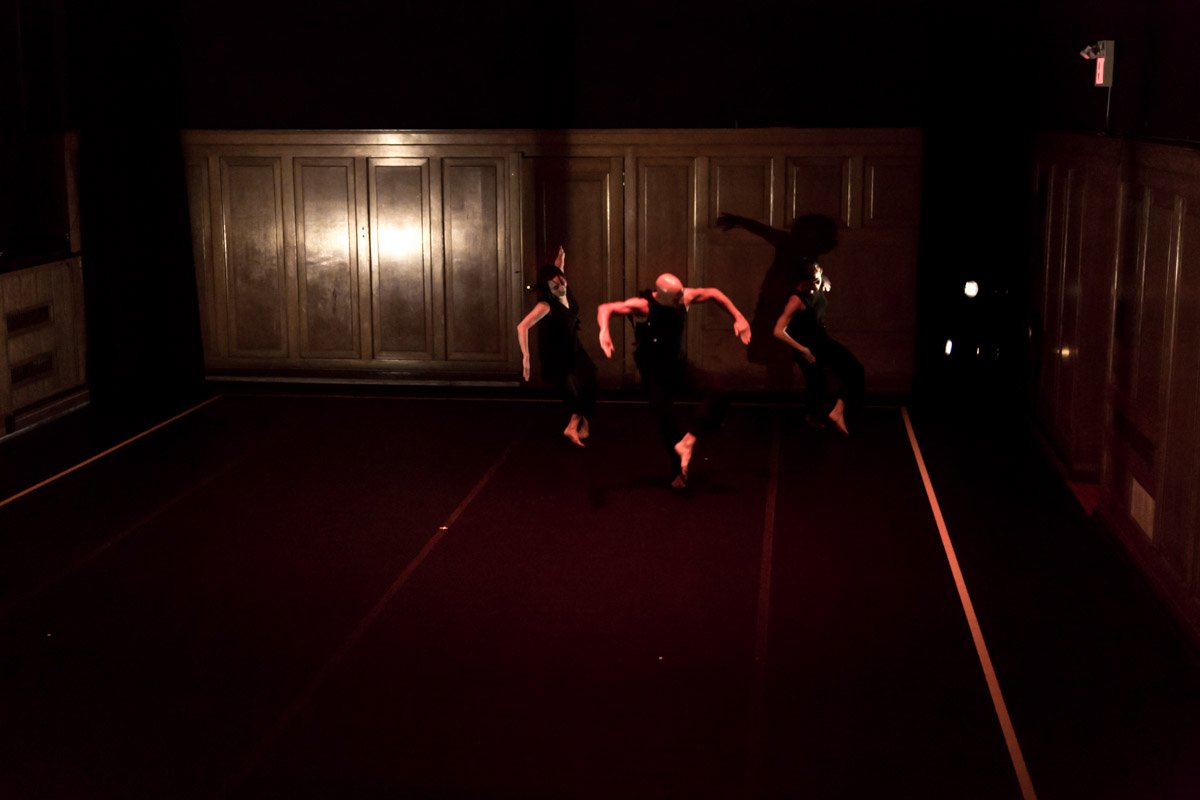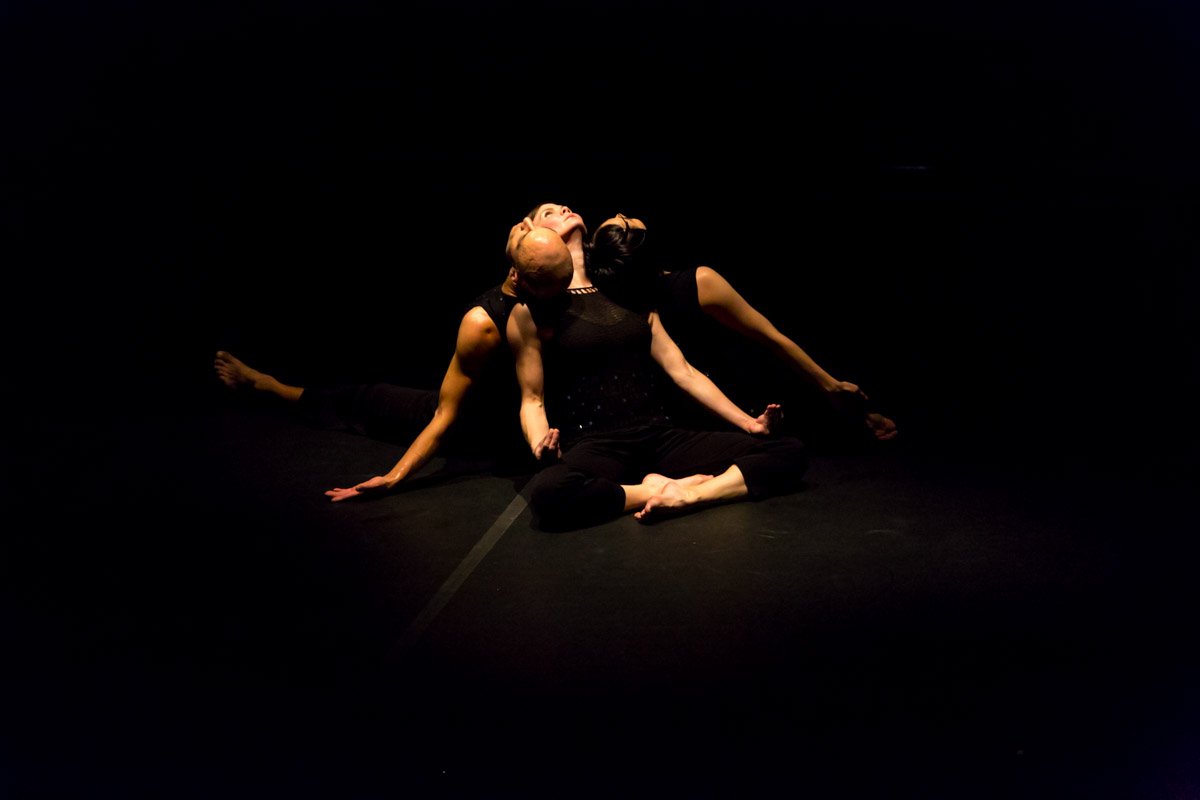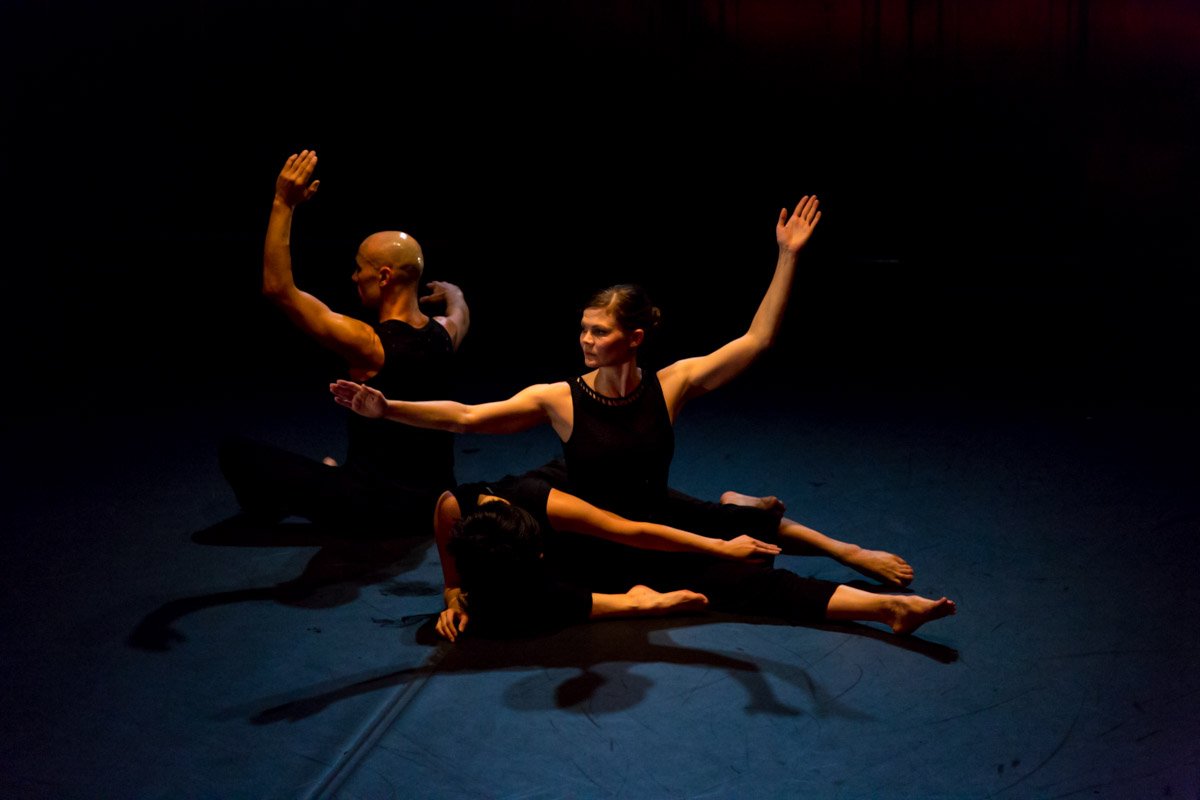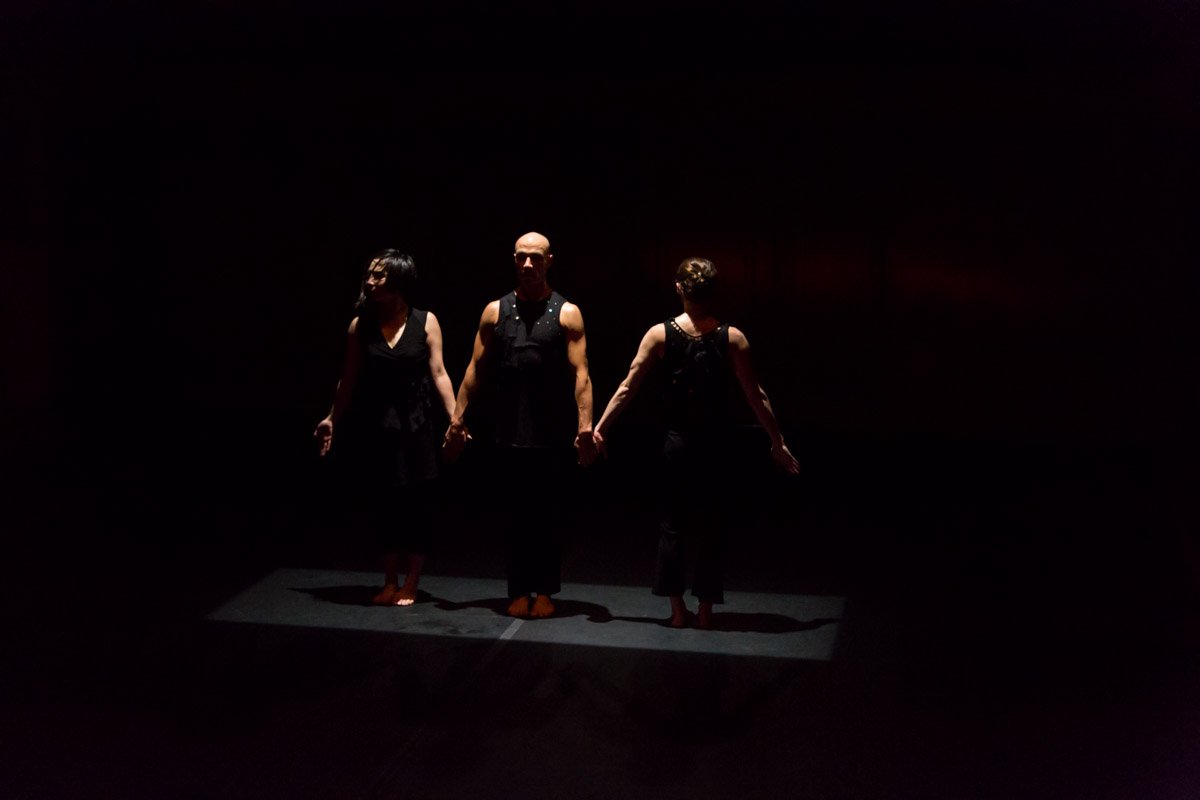Split Screen Stereophonic (2013)
/Although Peggy had folded mixed gender duets into some of her other works, 2013’s Split Screen Stereophonic is one of only two dances to focus solely on male/female partnering. Peggy writes:
I had a lot of different ideas rattling around in my head when I set out to make the double duet Spilt Screen Stereophonic. Covers of pop songs, vinyl records spinning on turntables, neighbours in apartment buildings living their personal lives on the other side of adjoining walls. I was thinking back on past relationships, about how distinctive the chemistry was within each of them, and I became intrigued by the idea of having two women perform the same choreography as the basis for duets performed simultaneously but developing very differently due of the actions, reactions, and interactions of the men.
Collaborating with Sarah Fregeau and Sahara Morimoto, we developed foundational material working with movement scores based on text from Eduardo Galeano’s sublime writing in The Book of Embraces. Once I brought in the women’s partners, I shifted to rehearsals focused on just one couple at a time – Benjamin Kamino with Sarah, and Sean Ling with Sahara. For a while we played with music by Joni Mitchell and Jane Siberry using the originals for one couple and covers by k.d. lang for the other.
When the time came to move away from the songs and consider music that would be more opened-ended, I thought instantly of a CD Debashis Sinha had released a couple of years earlier with his Berlin-based collaborator, Robert Lippok. I began matching tracks from Nuukoono with scenes from the dance and the fit was effortless – the shifting emotional tones and driving percussion of the music super charged all of the choreographic images.
Jennifer Dallas contributed the costumes – dark reds and browns for one couple and navy and slate grey for the other. Larry Hahn constructed a set that provided each duet with its own backdrop, and Marc Parent created a gorgeous lighting design filtering light through the drops and framing each side of the stage with sharp edges. The title calls up for me John Alleyne’s Split House Geometric, a dance that I always admired.
The original cast was sensational, but dancers who stepped into this work later – David Norsworthy, Ric Brown, Jarrett Siddall, and Kate Holden – also gave unforgettable performances. PB
“Split Screen Stereophonic dove right into the kind of chemistry and constant negotiations… in male-female couplings. Here the (Stereophonic) idea… was conceptually and physically split further in half as the women — Sarah Fregeau and Sahara Morimoto — entered, and in their separately halved sections of the stage, embodied in their active movements and ever-changing gazes, the similar yet different experiences in their relationship with a male partner…” David Fujino, Greater Toronto Chapter of the NAJC.



